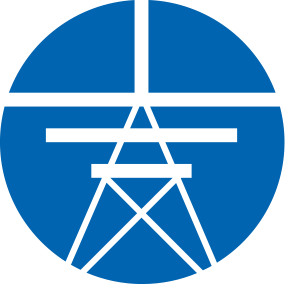Stability of Grid-Side Inverters
Modeling and Stability Control of Grid-Connected Inverters
Our team systematically investigates the dynamic modeling and stability control of grid-forming and grid-following inverters, focusing particularly on the nonlinear dynamics of synchronization control loop under grid disturbances and their impact on stability boundaries. By developing precise electromagnetic transient models, we reveal the coupling mechanism between power-angle instability and current limiting during low-voltage ride-through (LVRT) events, proposing coordinated control strategies to enhance transient stability. Additionally, we develop hybrid synchronization control methods for asymmetric fault scenarios to mitigate phase-jump risks. Our research outcomes provide strong theoretical foundations for parameter optimization and fault ride-through capability improvements in wind and photovoltaic inverters, supporting stable and secure operations of high renewable-energy penetration grids.
Interaction Stability and Cluster Control of Multi-Inverter Systems
Our research thoroughly explores interaction stability within multi-inverter clusters in renewable energy power plants, establishing dynamic coupling models for systems integrating both grid-forming and grid-following inverters. Leveraging equilibrium manifold theory, we analyze system-level stability boundaries and propose adaptive coordinated control strategies to prevent cascading disconnections. For weak grid scenarios, we develop early warning methods for multi-inverter interaction instability and validate the effectiveness of grid-forming inverter clusters in proactive fault current limiting. Our findings offer practical solutions for oscillation mitigation and coordinated voltage-frequency control in large-scale renewable energy plants, thereby enhancing grid reliability and stability.
Figure 1: Test platform for an energy system with heterogenous inverters
Characterization and Modeling of Inverter Fault Current Behavior
We conduct a systematic study on the dynamic short-circuit current response mechanisms of renewable energy inverters under grid fault conditions, establishing a universal fault current model applicable to both full-converter and doubly-fed wind turbine systems. Using electromagnetic transient simulation and Power Hardware-in-the-Loop (PHIL) testing, we quantitatively analyze how fault type (three-phase/ single-phase-to-ground), fault location, inverter hardware parameters, and control algorithms influence the amplitude, waveform, and rise rate of short-circuit currents. By leveraging the active current-limiting features of grid-forming inverters and the dynamic coupling of phase-locked loops, we have developed a reduced-order fault current model that accurately replicates the transient current–voltage characteristics of three-phase systems. This model can be integrated into grid simulation and testing platforms, providing standardized fault waveform data of new power sources for protection relays, and supporting adaptive protection analysis in grids with high renewable penetration.
Projects

